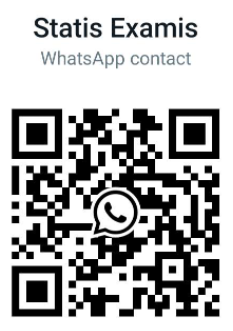Navigation » List of Schools » Glendale Community College » Psychology » Psychology 103 – Physiological Psychology » Spring 2022 » Exam 3
Question #1
A none of these
B had less dendritic development.
C had fewer synapses per neuron.
D were thinner.
E all of these
Question #2
A fasciculate.
B continue making formerly incorrect responses that are currently correct.
C form long-term working memories.
D form permanent short-term memories.
E continue making formerly correct responses that are currently incorrect.
Question #3
A the axons grow out from the retinal ganglion cells in the remaining half of the retina to targets systematically distributed over the entire optic tectum.
B the axons grow out from the retinal ganglion cells in the remaining half of the retina to their original targets on the optic tectum.
C the destroyed retina regenerates and then axons grow out from the complete retina and innervate the optic tectum in the species-typical fashion.
D half of the optic tectum degenerates.
Question #4
A a blueprint cell.
B a growth cell.
C an amoeba cell.
D a pioneer cell.
E a growth cone.
Question #5
A insidious.
B accelerated.
C ependymal.
D subventricular.
E inside out.
Question #6
A multipolar.
B myelinated.
C totipotent.
D bipolar.
E mesodermal.
Question #7
A neural growth factors.
B neural grove.
C growth cones.
D neural plate.
E neural tube.
Question #8
Which of the following is a major finding of the Jenkins and colleagues PET study of motor learning?
A The cerebellum was activated during both newly learned and well-practiced sequences but more during newly learned sequences.
B Dorsolateral prefrontal cortex was activated during the performance of newly learned but not well-practiced sequences.
C Contralateral primary motor and somatosensory cortices were equally activated during the performance of newly learned and well-practiced sequences.
D Posterior parietal cortex was more activated during the performance of both newly learned sequences than during the performance of well-practiced sequences.
E all of these
Question #9
One fMRI study indicated that the central sensorimotor programs for signing one’s name are stored in
A descending motor pathways.
B primary motor cortex.
C secondary motor cortex.
D spinal interneuronal pools.
E association cortex.
Question #10
A most extensors.
B fewest muscle fibers.
C most motor neurons.
D most muscle fibers.
E fewest motor neurons.
Question #11
A dorsolateral corticorubrospinal tracts were transected.
B cerebellum was lesioned.
C basal ganglia were lesioned.
D dorsolateral corticospinal tracts were transected.
E ventromedial corticospinal tracts were transected.
Question #12
A interneurons of the spinal gray matter that in turn synapse on motor neurons that project to the distal muscles of the arms and legs.
B Betz cells.
C motor neurons that project to the fingers.
D muscles of the hands and wrists.
E muscles of the fingers and thumb.
Question #13
A mirror neurons.
B somatotopic neurons.
C supplementary motor neurons.
D ballistic neurons.
E premotor neurons.
Question #14
A Jackson.
B Sperry.
C Pinel.
D Hebb.
E Penfield and Boldrey.
Question #15
A all of these
B individual responses are often integrated into continuous motor programs.
C the locus of control is often shifted to lower levels of the sensorimotor hierarchy.
D the locus of control is often shifted from conscious to unconscious control mechanisms.
Question #16
A none of these
B all of these
C parallel.
D functionally segregated.
E hierarchical.
Question #17
A the PAG contains opiate receptors.
B none of these
C all of these
D some opiates are endogenous.
E stimulation of the PAG produces analgesia.
Question #18
A free nerve endings.
B nociceptors.
C red corpuscles.
D Pacinian corpuscles.
E temperoceptors.
Question #19
A primary sensory cortex.
B secondary sensory cortex.
C hierarchical cortex.
D association cortex.
Question #20
A occipital lobe.
B parietal lobe.
C piriform cortex.
D thalamus.
E glomeruli.
Question #21
A fatty.
B oily.
C umami.
D yumyumi.
E mamawawa.
Question #22
A they play important roles in the social lives of many species.
B their physiology is particularly simple.
C their anatomy and physiology are well understood.
D all of these
Question #23
A spatiotopic.
B timbre topic.
C intensity topic.
D homotopic.
E tonotopic.
Question #24
A none of these
B amplitude, complexity, and frequency
C frequency, amplitude, and complexity
D amplitude, frequency, and complexity
E complexity, frequency, and amplitude




